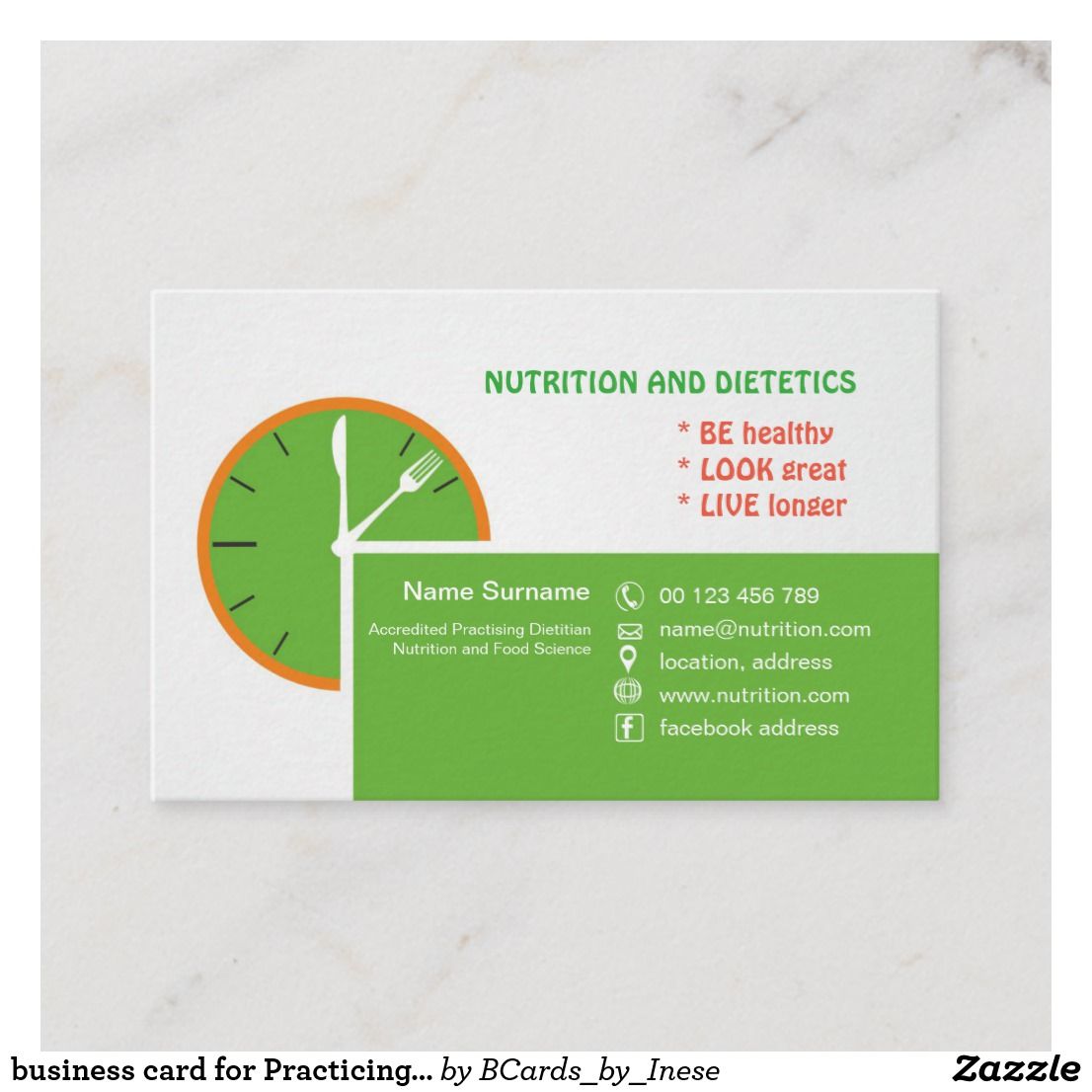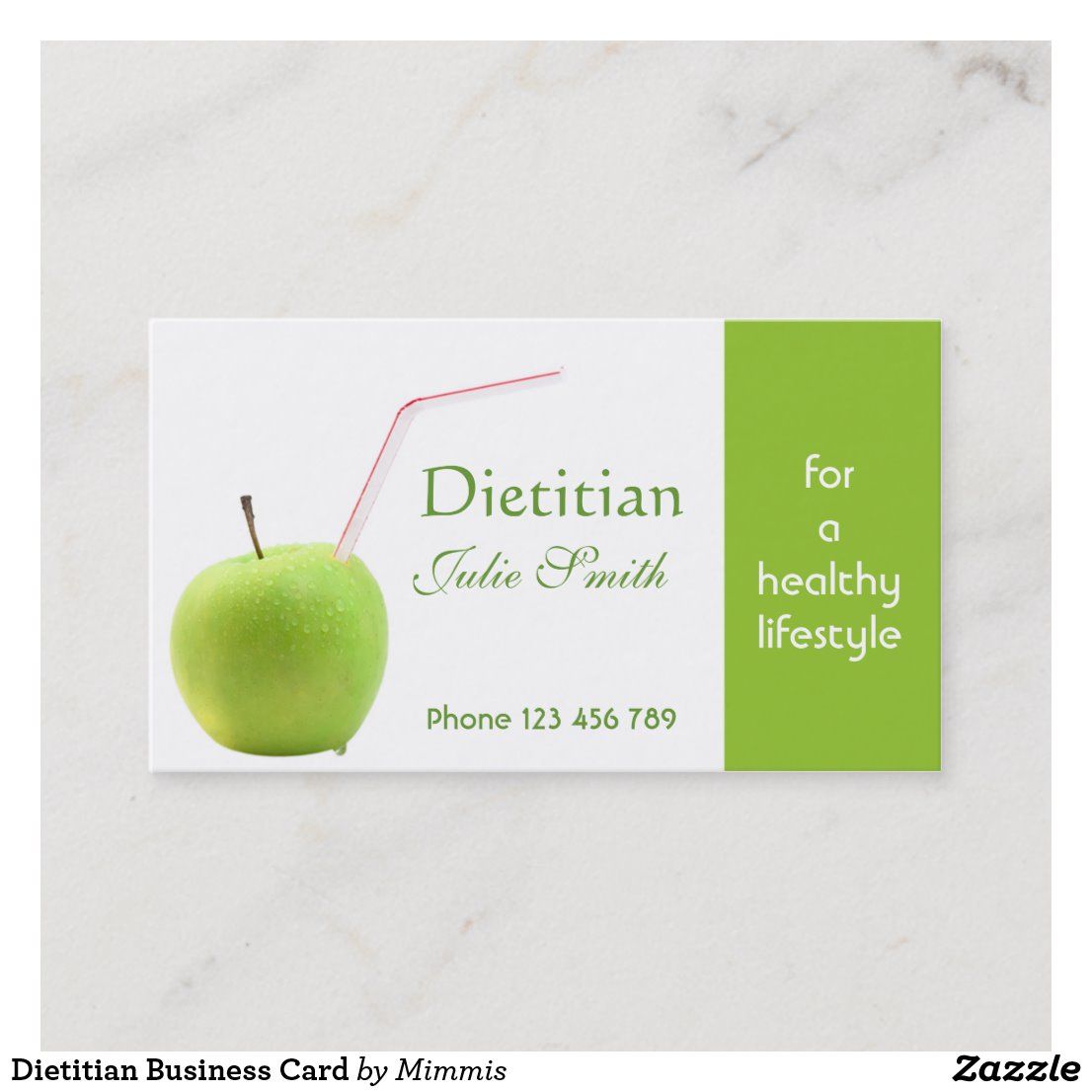
Are you a dietitian looking to make a lasting impression with your potential clients? One effective way to do so is by having well-designed and professional business cards. In the digital age, where everything seems to be virtual, business cards still hold great value when it comes to networking and leaving a tangible reminder of your services. In this article, we will guide you through the process of creating eye-catching dietitian business cards that make a lasting impact.
Why Business Cards are Still Relevant

In this technologically advanced era, you might wonder why business cards are still relevant. Here’s the simple truth: they offer a personal touch that digital interactions can’t replicate. Business cards provide an opportunity for face-to-face networking and give you a chance to make a memorable impression on potential clients.
Personal connection
Business cards allow you to connect with people on a personal level. When you hand over a business card, you are engaging in a physical exchange that can create a more meaningful connection than simply exchanging contact information online.
Tangible reminder
Having a physical card to hold onto serves as a constant reminder of your services. Unlike an email or a phone number stored in a contact list, a business card has a physical presence that can linger in someone’s wallet or on their desk, providing easy access to your contact information when needed.
Professional image
Presenting potential clients with a well-designed, professional business card conveys a sense of credibility and competence. It shows that you are invested in your profession and take your work seriously, which can help build trust and confidence in your services.
Now that you understand the importance of business cards, let’s dive into the essential elements to include when creating your dietitian business cards.
Key Elements for Effective Dietitian Business Cards

1. Contact Information
The first and most important element of your business card is your contact information. Include your name prominently on the card, followed by your title as a dietitian. Be sure to include your phone number, email address, and website (if applicable). You may also consider adding your professional social media handles, such as LinkedIn or Instagram, to further connect with potential clients.
2. Logo and Branding
Incorporating your logo and branding elements into your business card design will ensure consistency and help reinforce your professional image. If you don’t have a logo, consider creating one to represent your personal brand as a dietitian. Choose colors, fonts, and graphics that reflect your style and appeal to your target audience.
3. Professional Headshot
Including a professional headshot on your business card can help potential clients put a face to your name. It adds a personal touch and makes your card more memorable. Ensure that the headshot is of high quality and reflects your professionalism.
4. Specializations and Services
If you have specialized areas of expertise, such as pediatric nutrition or sports nutrition, consider including them on your business card. This can help potential clients immediately understand the unique value you bring to the table. Additionally, briefly mention the services you offer, such as one-on-one consultations or group workshops, to give recipients a clear idea of your offerings.
5. Testimonials or Client Success Stories
Adding a small section on your business card featuring a testimonial or a brief client success story can be a powerful way to build credibility and trust. Choose a positive quote that highlights the positive impact you have had on your clients’ lives. This small touch can leave a lasting impression and encourage potential clients to reach out to you.
6. White Space and Layout
When designing your business card, ensure that you have sufficient white space to maintain readability and avoid clutter. Choose a layout that is clean and organized, allowing the recipient to easily locate and absorb the information. Avoid overcrowding your card with too much text or imagery.
7. Paper Quality and Finishing
Investing in quality paper and finishing options can make a significant difference in how your business card is perceived. Opt for a heavier weight cardstock that feels substantial in the recipient’s hand. Consider adding finishing touches such as glossy or matte finishes, embossing, or metallic accents to add an extra touch of professionalism and prestige.
Design Tips for Effective Dietitian Business Cards
Now that you have a good understanding of the essential elements to include, let’s explore some design tips to make your dietitian business cards visually appealing and memorable.
1. Use a Clean and Legible Font
Choose a font that is clear, professional, and easy to read. Avoid using overly decorative or difficult-to-read fonts that can detract from the information on your card. Sans-serif fonts, such as Arial or Helvetica, are widely used for their simplicity and legibility.
2. Select a Color Scheme
Colors can evoke certain emotions and associations, so it’s important to choose a color scheme that aligns with your personal brand and appeals to your target audience. Stick to a limited color palette to maintain a cohesive and professional look.
3. Incorporate Visual Elements
Consider using relevant visual elements like fruits, vegetables, or other food-related graphics to reflect your specialty as a dietitian. Be mindful of how these elements enhance the overall design without overpowering it. A subtle, well-placed visual element can make your card more visually appealing and memorable.
4. Don’t Forget the Back of the Card
Utilize the back of your business card to display additional information or create a memorable experience. For example, you can print a brief recipe, a motivational quote, or additional contact information on the back. This keeps your card informative and multifunctional.
Printing and Distribution

Once you have finalized your design, it’s time to print your dietitian business cards. Work with a professional printing service to ensure high-quality results. Choose a finish that complements your design and enhances its visual appeal.
To distribute your cards effectively, carry a stack with you at all times, as you never know when you might come across an opportunity to network. Hand out your cards during networking events, conferences, or even casually when you meet potential clients in your day-to-day life.
Conclusion

Creating effective and professional dietitian business cards is an important step in building your personal brand and connecting with potential clients. Remember to include essential contact information, utilize branding elements, and choose a design that reflects your professionalism. By incorporating these key elements and adopting thoughtful design tips, you can create business cards that leave a lasting impression and generate new opportunities for your dietitian business. Start designing your business cards today and witness the positive impact they can have on your professional journey as a dietitian.
Ava Taylor’s passion for branding and marketing shines through in her dynamic writing. She brings a unique perspective with her background in event planning, infusing creativity into her content. When she’s not writing, Ava enjoys organizing community events and gatherings.